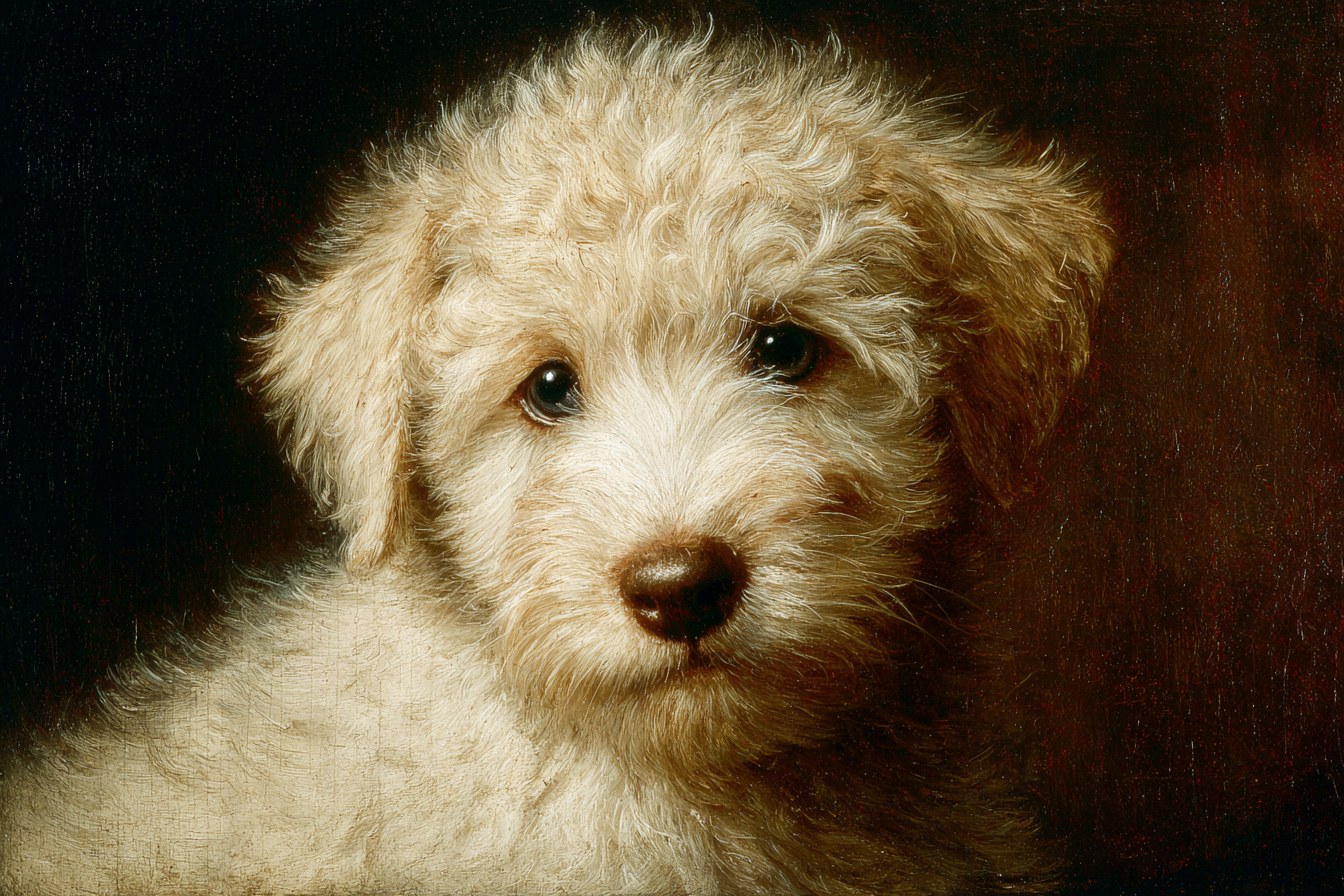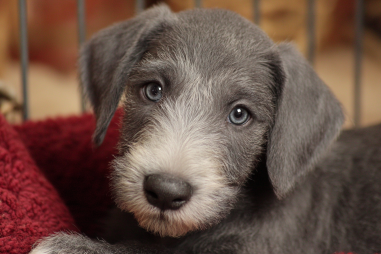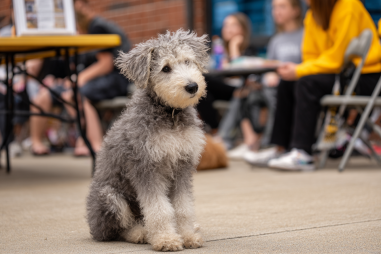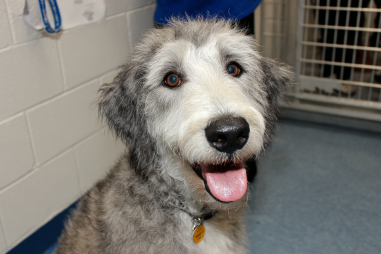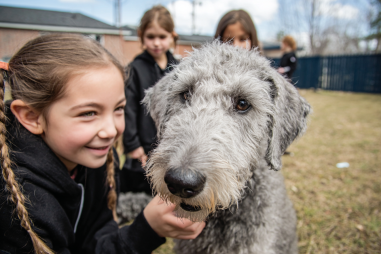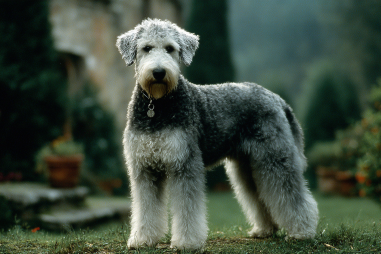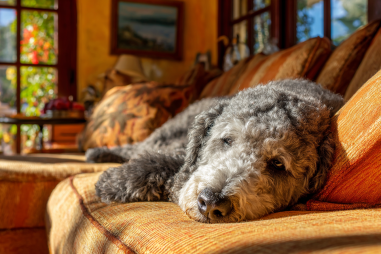The Bedlington Terrier is a breed that never fails to capture the hearts of dog lovers with its unique lamb-like appearance and spirited personality. Behind its distinctive look lies a rich tapestry of history that traces back to the mining communities of northern England. This breed’s journey is a fascinating blend of purpose, evolution, and affection from enthusiasts around the world. Let’s unravel the intriguing history of the Bedlington Terrier and explore how it has grown to become a cherished companion today.
Origins and Early Development
The Bedlington Terrier’s roots lie in the 19th century, in the small mining town of Bedlington, Northumberland, England. This area was known for its coal mines, and miners had a unique need for small, agile dogs that could keep vermin populations under control in and around the mines. The breed that would become known as the Bedlington Terrier was bred from various terriers and greyhounds available locally. Early records suggest that the breed was created by crossing the Old English Terrier, Whippet, and possibly even the Otterhound to combine stamina, speed, and keen hunting instincts.
These mixed dogs were prized for their speed and courage underground. They were able to flush out rats and other pests from tight spaces, making mining operations safer and more efficient. As the mining industry thrived in the 1800s, so too did the use of these terrier mixes, which gradually became more refined and standardized by dedicated breeders.
Role and Use in History
Initially, Bedlington Terriers were not just household pets; they were working dogs integral to everyday life in mining villages. Their primary role was vermin control—specifically ratting—due to the threat rodents posed to food stores and machinery. Their quick reflexes and agility made them exceptional at hunting underground, while their tenacity and fearless nature allowed them to tackle prey larger than themselves.
Beyond ratting, early Bedlingtons also served in other roles such as hunting rabbits and small game, showcasing their versatility and intelligence. Over time, breeders aimed to preserve these working traits while also enhancing the breed’s temperament to be more suitable for family life. This shift was crucial as the industrial revolution changed the landscape and the demand for mining dogs decreased.
Evolution of Physical Traits
The physical characteristics of the Bedlington Terrier are nothing short of distinctive, which is why it stands out in the terrier group. Early Bedlington Terriers looked somewhat scruffier, with less emphasis on the breed’s now-iconic lamb-like coat and arched back. However, as the breed gained recognition, breeders focused on refining specific traits that would highlight its elegance and individuality.
The soft, curly coat resembling sheep’s wool is a hallmark of the breed. This coat is not only visually unique but also functional, as it is relatively hypoallergenic and weather-resistant. Another well-known trait is the Bedlington’s arched back, giving it a graceful outline and a somewhat aerodynamic shape, aiding in its agility and speed. The breed’s head shape—with a distinctive pear-like form and almond-shaped eyes—adds to its gentle yet alert expression.
These coveted physical traits were carefully maintained through selective breeding standards set by kennel clubs. The goal was to keep the Bedlington Terrier robust and agile while emphasizing its charming, almost whimsical appearance.
Popularity Growth Over Time
Throughout the late 19th and early 20th centuries, the Bedlington Terrier transitioned from a local working dog to an admired show dog and companion. This transformation was aided by the rise of organized dog shows, where the breed’s unique look and spirited personality captured the attention of dog enthusiasts and breeders alike. The first Bedlington Terriers began appearing in formal dog shows by the 1870s, helping to establish the breed’s credentials and standards.
Interest in the breed expanded beyond England as these dogs were exported to other countries including the United States, where they found favor among collectors and families seeking a small, lively household companion. The Bedlington’s adaptability to both active outdoor lifestyles and home environments fueled its steady rise in popularity.
However, despite their appeal, Bedlingtons have always maintained a relatively niche status compared to some other terriers. Their specialized coat and unique shape mean they require specific grooming and care, which has kept the breed a favorite among dedicated enthusiasts rather than the general dog-owning public.
Influential Breeders and Dog Shows
Several key breeders played a vital role in shaping the Bedlington Terrier into the beloved breed it is today. One prominent figure was John Dodd, a 19th-century miner and breeder from Bedlington who is credited with refining the breed’s look and preserving its unique qualities. His efforts helped define the breed standard and ensure the dogs retained their working ability alongside their show quality.
Dog shows were instrumental in popularizing the Bedlington Terrier beyond its original community. The breed was officially recognized by The Kennel Club of the UK in 1876. Since then, various notable show dogs have helped maintain public interest and encourage improvements in breeding practices. Winning dogs served as ambassadors, inspiring future generations of breeders to uphold the Bedlington’s qualities.
Organizations dedicated to the breed, including breed clubs formed in both the UK and the US, have been essential in promoting responsible breeding and educating owners about Bedlington Terrier care. These institutions continue to uphold breed standards and celebrate the breed’s legacy at dog shows and public events.
The Breed’s Legacy Today
Today, the Bedlington Terrier enjoys a well-deserved reputation as a spirited, affectionate, and intelligent companion. While the breed is no longer widely used for its original working purposes, its legacy as a courageous and hardworking dog lives on in its character and appearance. Many Bedlington Terriers excel in dog sports, obedience training, and even as therapy dogs, showcasing their versatility and eagerness to please their owners.
The Bedlington’s distinctive look continues to fascinate dog lovers worldwide, making it a beloved choice for those seeking a unique pet with history and heart. Enthusiasts praise the breed for its gentle nature and loyal disposition, often describing them as “big dogs in small, curly packages.”
Thanks to careful stewardship by breeders and clubs, the Bedlington Terrier is set to maintain its special place in dog communities. Its fascinating history—from underground miner’s helper to cherished family companion—reflects the resilience and charm that define this remarkable breed.
Whether you’re drawn to its quirky appearance, spirited personality, or rich heritage, the Bedlington Terrier offers a connection to an important part of England’s working-class history while providing joy and companionship in modern times.

